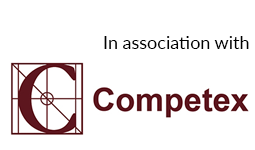Economic trends, business leadership challenges and the role of the interim market
By Simon Drake, IMA
The first thing that Neil Morrison, HRD at Penguin Random House, shared with us at last week’s IMA meeting was reassuring. In his experience, interim providers are often good quality. Perhaps it is the nature of the assignment – it’s in the interest of the provider to maintain their interaction with both the candidate and the client for the duration of assignment.
Neil was with us at the IMA on 16th March to lead a discussion on how interims can support businesses in their leadership challenges. A group of leading providers joined us for the discussion and from the conversation at the meeting, it seems the challenges show no sign of abating! Employers are notoriously risk-averse. Who wouldn’t be after the longest and deepest recession for a generation? And despite latest data showing employer confidence is growing [1], everything from the EU referendum to the downturn in the Chinese stock market can slow hiring intentions.
We discussed how some clients have brought much of the recruitment processes in-house – which many HR professionals see as good news because it means the business is far more hands-on in finding the right talent. But there can still be that basic lack of understanding of a “true” interim. Too many clients seem to think that the same senior executive can be brought in to lead a change in an organisation and then that same individual will want to stay on. This just isn’t the case. Delegates at the meeting agreed that not only does a true interim relish the change management work they do, they also wouldn’t be the right fit for a permanent position – the roles and skill sets required are quite different. Interims will frequently tell their provider that the client is trying to hang onto them for too long.
Differentiating between a distressed purchase by the client and bringing someone in to create “value added” can be a real test for the provider but we agreed getting this right is essential. Knowing the reason why the assignment has been created – which can often expose real differences of opinion within the client organisation!– is the key to getting the right interim for the right job. Neil suggested that a client has a duty to be open about its culture and the interim’s EQ needs to be tested and visible if the provider is to get the fit right.
Furthermore, we believe the need for interims is not going to decline any time soon. Technological change, innovation, M&As, globalisation and public sector procurement developments are continuing apace. Interims have a vital role to play to help businesses navigate and succeed in light of all these changes.
So it seems we still have some work to do on educating the client about the role of an interim. Rather than see this as the client’s problem, if we are going to grow and flourish as a sector, we need to own this problem and ensure that interim providers are the primary source of information, advice and guidance for clients. This year, the IMA will be conducting some research into client views. This work will be led by Kate Shoesmith at the Recruitment & Employment Confederation (REC) and guided by Richard Clifford on the IMA executive committee. Watch this space to find out more and get involved.





